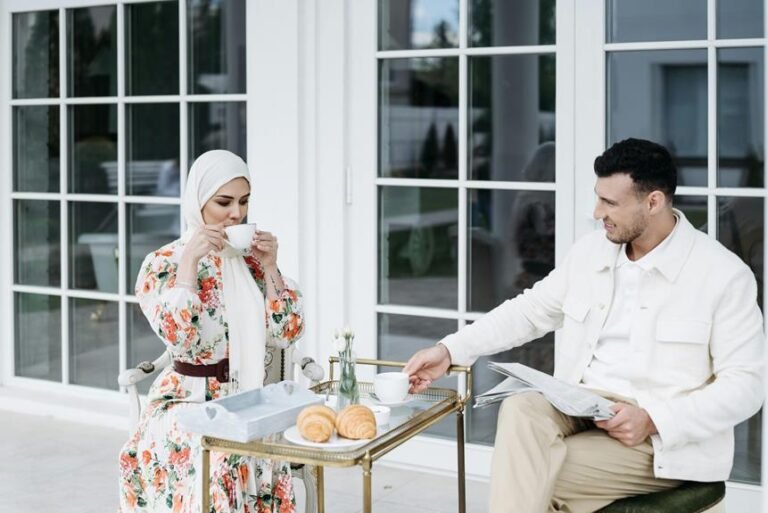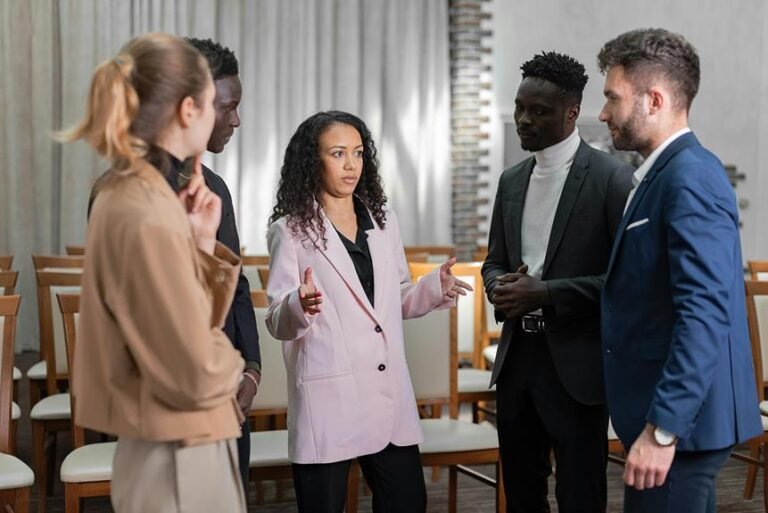The Importance of Communication in Relationships

In relationships, the importance of communication cannot be overstated. It builds trust, deepens connections, and effectively resolves conflicts. By actively listening, expressing needs, and setting healthy boundaries, you foster empathy and understanding. Nonverbal cues and open dialogue play key roles in enhancing emotional connections. The lifeline of relationships is honest, open communication, shaping the trust and authenticity needed for lasting connections.
Importance of Communication Key Takeaways
- Effective communication builds trust and understanding.
- Communication fosters emotional connection and intimacy.
- Resolving conflicts requires strong communication skills.
- Active listening enhances empathy and prevents misunderstandings.
- Healthy relationships thrive on open, honest communication.
Building Trust Through Communication
To cultivate a strong foundation of trust in your relationship, effective communication serves as the cornerstone.
Trust-building exercises, such as vulnerability sharing, can deepen your connection with your partner. When you engage in transparent communication and open dialogue, you create a safe space for both of you to express your thoughts and feelings honestly.
Sharing your vulnerabilities can be intimidating, but it allows for authentic connections to blossom. By being open about your insecurities, fears, and aspirations, you invite your partner to do the same, fostering a deeper understanding of each other.
Enhancing Emotional Connection
Deepening your emotional connection with your partner requires genuine empathy and active listening. To truly enhance your emotional intimacy, it’s important to create a safe space where vulnerability sharing is welcomed and encouraged. This means being open and honest about your feelings, fears, and insecurities.
Share your innermost thoughts with your partner, allowing them to see the depths of your emotions. In turn, encourage your partner to do the same.
When engaging in vulnerability sharing, remember that active listening is key. Listen not just with your ears but with your heart. Show understanding and empathy, validating your partner’s emotions and experiences. This fosters a deep sense of connection and trust between you both.
Resolving Conflicts Effectively
Enhancing your conflict resolution skills is essential for maintaining a healthy and harmonious relationship. Conflict resolution techniques are crucial for maneuvering disagreements with your partner effectively. To resolve conflicts successfully, it’s vital to hone your effective communication skills.
When conflicts arise, try to approach the situation with empathy and understanding. Active listening and expressing your thoughts calmly can prevent misunderstandings from escalating. Use ‘I’ statements to communicate your feelings without placing blame. This technique encourages open and honest dialogue, fostering a sense of mutual respect.
Another valuable technique is to take breaks when emotions run high. Stepping away from the situation temporarily can provide clarity and prevent impulsive reactions.
Active Listening Techniques
During conflicts in your relationship, mastering active listening techniques can greatly improve your communication and understanding with your partner. Reflective listening is a powerful tool where you paraphrase what your partner has said to show that you’re truly listening and trying to comprehend their perspective.
Engaging in open communication by asking clarifying questions can help avoid misunderstandings and promote a deeper connection. Mindful listening involves being fully present in the moment, focusing on what your partner is saying without distractions.
Responding with empathy shows your partner that you value their feelings and experiences, creating a safe space for open dialogue. By incorporating these active listening techniques into your conversations, you can foster a stronger bond with your partner and cultivate a more harmonious relationship built on mutual respect and understanding.
Nonverbal Communication Cues
By paying attention to nonverbal communication cues, you can gain valuable insights into your partner’s feelings and emotions during conversations. Body language and facial expressions often convey more than words can express.
Notice how your partner’s posture shifts, their eyes widen or narrow, and how they use gestures. These cues can reveal underlying emotions that words may not capture.
For instance, crossed arms and a furrowed brow could indicate defensiveness or disagreement, while a relaxed posture and a genuine smile may signify comfort and agreement. Understanding these signals can help you respond more effectively and empathetically.
When you observe these nonverbal cues, it shows your partner that you’re attuned to their emotions and willing to communicate on a deeper level.
Setting Healthy Boundaries
Pay attention to your own needs and feelings when it comes to setting healthy boundaries in your relationship. Respectful communication is key in establishing these boundaries.
Express your thoughts and emotions openly and honestly with your partner, ensuring that both of you’re on the same page. Clear expectations are essential for a strong foundation in any relationship. Clearly define what’s acceptable and what’s not, establishing guidelines that both parties agree upon.
Setting healthy boundaries isn’t about building walls but rather about creating a safe space where both partners feel respected and understood. It’s vital to communicate your boundaries in a kind and loving manner, emphasizing that these boundaries are in place to strengthen the relationship, not to create distance.
Expressing Needs and Desires
When expressing your needs and desires in a relationship, remember that open and honest communication is essential for fostering understanding and connection. It’s pivotal to create a safe space where both you and your partner feel comfortable sharing your thoughts and feelings.
By engaging in open communication, you allow room for vulnerability and authenticity to flourish. Honest conversations pave the way for mutual respect and trust to grow stronger.
Expressing your needs requires a delicate balance of assertiveness and empathy. Clearly articulating what you require from the relationship while being considerate of your partner’s feelings is key. Remember that your needs are valid, and expressing them can lead to a deeper level of intimacy and satisfaction within the relationship.
When sharing your desires, be transparent about what brings you joy and fulfillment. Encourage your partner to do the same, fostering a culture of openness and understanding.
Cultivating Empathy and Understanding
To cultivate empathy and understanding in your relationship, it’s vital to actively listen and validate your partner’s emotions and experiences. Engaging in empathy exercises can help you develop a deeper connection by understanding perspectives beyond your own.
Relationship dynamics are enriched when both partners make an effort to comprehend each other’s feelings and viewpoints.
Practicing emotional intelligence plays an essential role in fostering empathy and understanding. By being attuned to your partner’s emotions and responding with sensitivity, you create a safe space for open communication.
Acknowledging and validating your partner’s feelings validate their experiences, strengthening the bond between you.
Frequently Asked Questions
How Can Past Traumas Affect Communication in Relationships?
Past traumas can deeply impact communication in relationships. Trust issues and emotional barriers may arise, hindering open dialogue. Recognizing these effects and seeking support can help you navigate challenges, fostering understanding and connection.
What Role Does Social Media Play in Communication Dynamics?
Social media has a significant impact on communication dynamics. Your online presence shapes interactions, influencing how you connect with others. Embrace technology wisely to enhance relationships, using it as a tool for connection rather than a barrier to true communication.
Is It Possible to Over-Communicate in a Relationship?
Sometimes, it’s possible to over-communicate in a relationship. Boundaries are essential for maintaining trust and balance. Remember, listening is just as important as talking. Find that sweet spot where you both feel heard and understood.
Can Cultural Differences Impact Communication Styles?
When cultural differences come into play, language barriers can lead to misinterpretation. Nonverbal cues may be misunderstood, causing confusion. Being aware of these differences and open to learning can help bridge communication gaps in relationships.
How Do Personality Traits Influence Communication Patterns?
When maneuvering communication barriers in relationships, your personality traits play a essential role. Understanding how your and your partner’s differences affect communication patterns is critical for fostering effective communication. Embrace these differences for better connection.
Conclusion
To wrap up, communication is the cornerstone to fostering healthy and fulfilling relationships. By actively listening, expressing your needs, and setting boundaries, you can build trust, enhance emotional connections, and resolve conflicts effectively.
Nonverbal cues and empathy play a pivotal role in understanding your partner’s perspective. Remember to communicate openly and honestly to nurture a strong and enduring bond with your loved ones.
Keep practicing these communication skills to maintain a happy and harmonious relationship.






